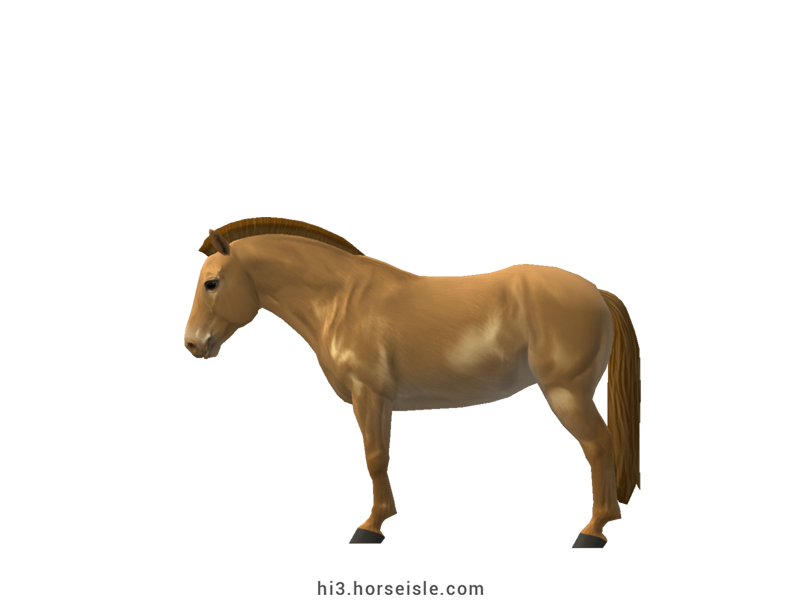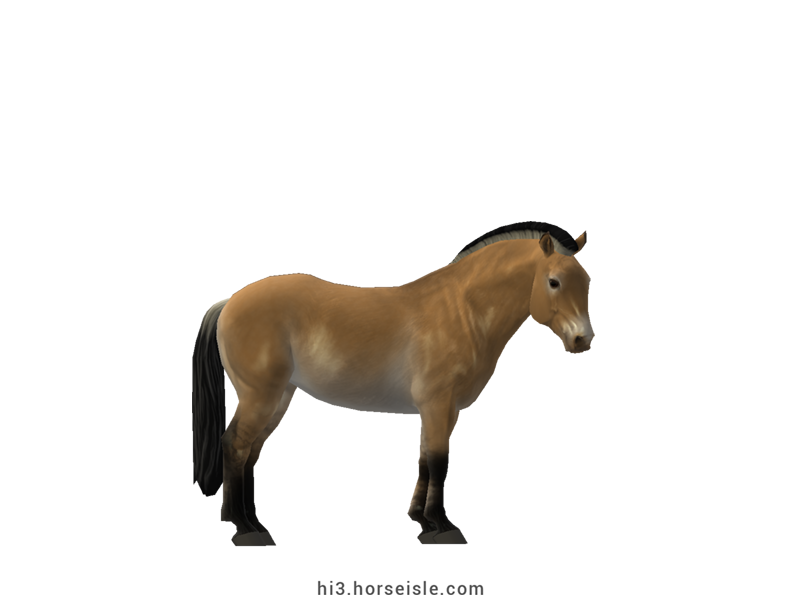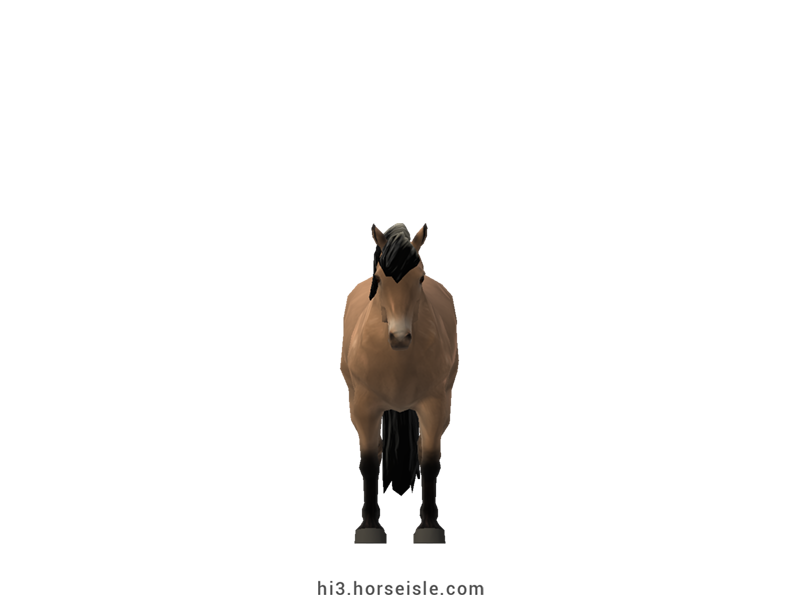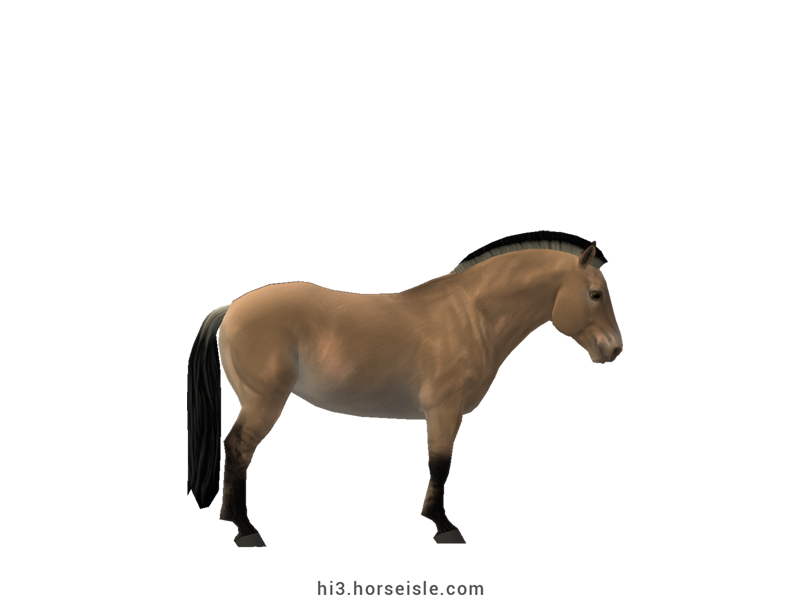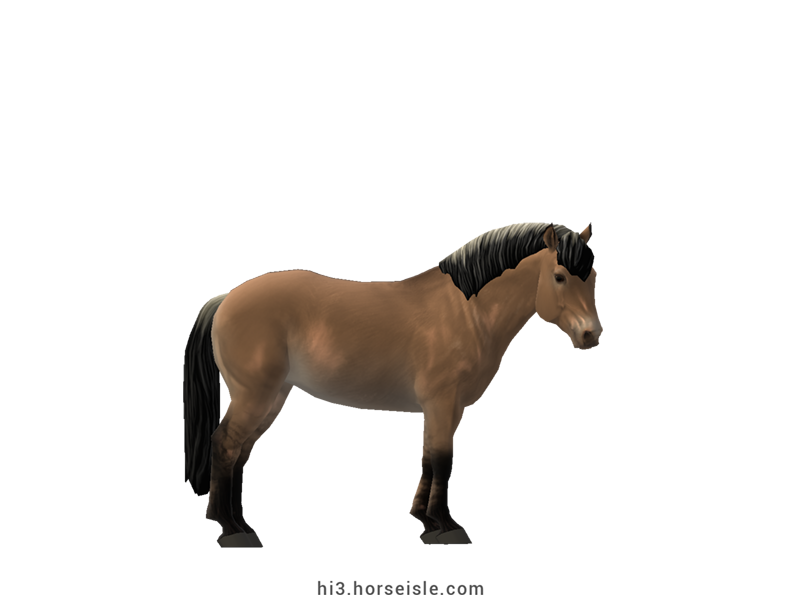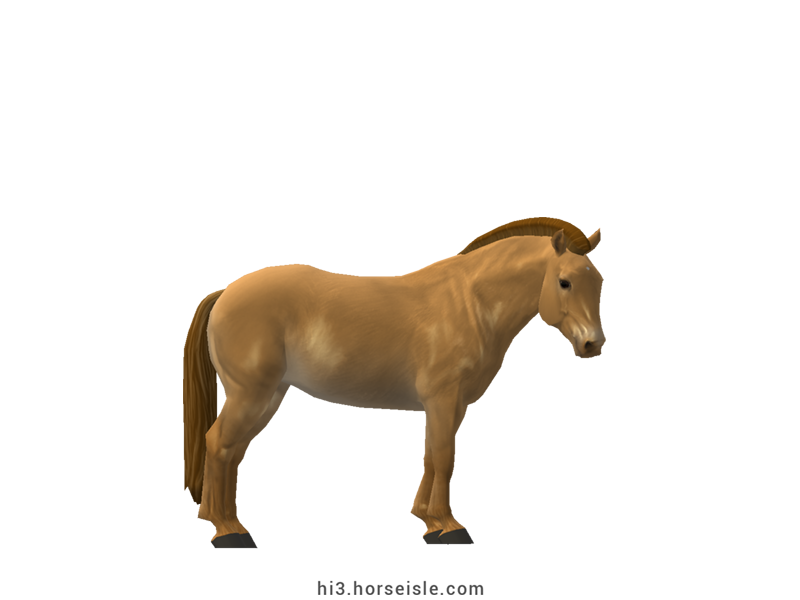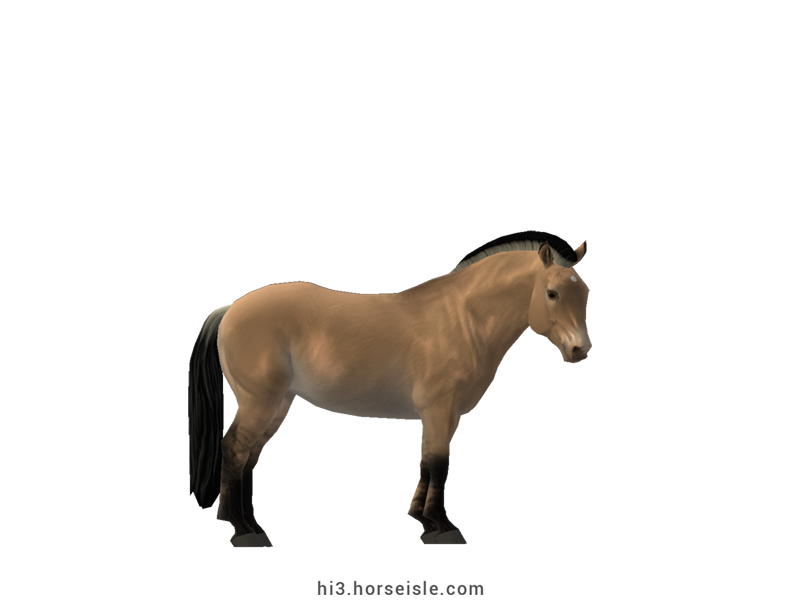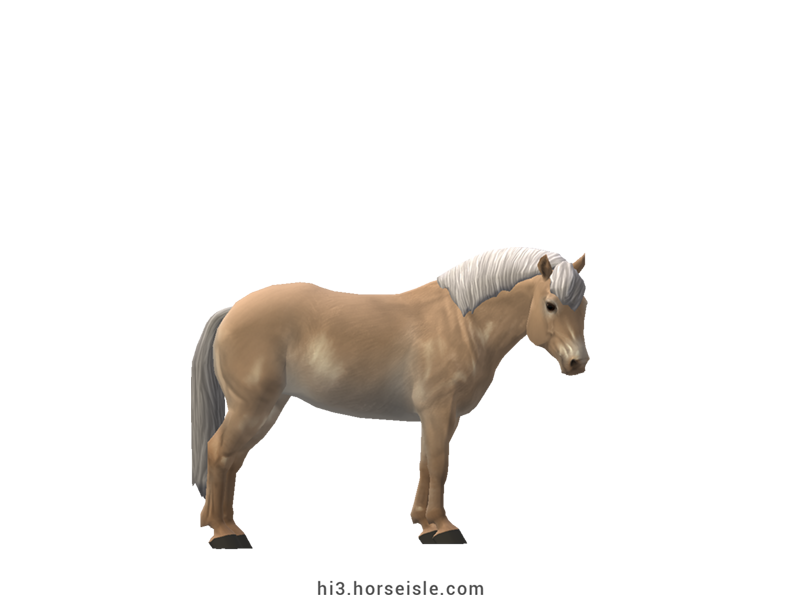Our Massive Real World Equine Reference!
[ INDEX ] Equine Type: Horse Breed: Norwegian Fjord (Fjord) [ PREV ] [ NEXT ]
The horse of the Vikings:
The story of the Norwegian Fjord begins in the last Ice Age, when horses have already roamed Europe. Some migrated from Sweden and, over the ice, from Denmark, to the fjord-rich coast of western Norway.
Some millennia later, now fully domesticated, these horses became popular among the Norwegian Vikings who used them for transportation and farm work. The Vikings selectively bred them and crossed them with horses found in British and Icelandic Viking settlements.
Still, the resulting breed remained true to its original form in both conformation and coat that resembled the dun horses portrayed in cave paintings from the last Ice Age. This breed, originally called 'Vestlandshesten,' is known today as Norwegian Fjord.
Gaining popularity:
While the Vikings disappeared in the 12th century, their Fjord horses continued flourishing. Being easy-keepers, these horses soon gained the love of the Norwegian farmers who used them for farming, logging, and cart-pulling.
By 1840s, the Norwegian Fjord was extremely popular, and this prompted the Norwegian government to establish a State Stud for the breeding of Fjords. The stud was closed in the 1860s, but the breeding continued. The government purchased stallions and made them available for private breeders who bred said horses on their farms.
During the 1870s and 1880s, annual shows took place all across Western Norway to evaluate the quality of the breeding stock. This boosted the popularity of this native breed and prompted breeders to purchase stallions by themselves.
A pure breed:
Seeking to increase the size and strength of their Fjords, some breeders crossed their stock with Dole stallions (see 'Dole.') This crossbreeding continued until 1907, when it was agreed that the Norwegian Fjord should remain a pure breed.
Breeders then turned to use purebred stock, namely a stallion named Njal that was one of the few purebred stallions left. Today, all Fjord horses can be traced back to this one stallion.
In 1910, the studbook of the Norwegian Fjord was established.
An old breed in a new world:
Originally, Norwegian Fjords were bred for the muscular conformation required for draft work. This changed during the 1960s, when agriculture was mechanized and recreational riding gained popularity.
In order to maintain the relevance of their old breed in this new world, the breeding association of the Norwegian Fjord shifted its breeding goal to make the Fjord better fit for both riding and driving, while also keeping it true to its unique color and conformation.
With crossbreeding out of the question, criteria were set to encourage the breeding of lighter individuals within the breed. Great care was given to their personality which had to be calm and friendly. This generated the lighter Norwegian Fjord which we all know today.
The Norwegian Fjord Today:
Today, the Norwegian Fjord is a famous breed thanks to its unique appearance. This versatile breed is found primarily in Europe and the USA, where it serves for recreational riding in a variety of disciplines, as well as for driving.
Iconic colors:
Norwegian Fjords have a special color palette made of five, unique shades of dun: gra ('grey' dun or mouse dun), rodblakk (red dun), ulsblakk (white dun), gulblakk (yellow dun), and the most common of all, brunblakk (brown dun).
A sixth color, kvit ('white,') can crop up when breeders cross cream-diluted duns (yellow duns and white duns.) Kvit horses are ineligible for registration as Fjords.
In Horse Isle, the coat of white dun doesn't exist. As a compromise, we allow the registration of double-cream duns, because their coats are similar to white duns except for the blue eyes.
Conformation:
Norwegian Fjords have a unique conformation that resembles a rare combination between a light draft pony and a compact cob.
The head is wide and deep but short in length, with large jaws, a squarish muzzle, large eyes, and short ears that are set wide apart. The profile is usually concave but can sometimes be straight.
The neck is thick and muscular, of a short-to-medium length, and with a prominent, convex topline. The withers are only slightly prominent and connect smoothly to an equally smooth back. The croup is long and slightly sloping, and the girth is deep. The legs are muscular and sturdy, and have light to medium feathering.
Exquisite manes and tails:
One of the hallmarks of the Norwegian Fjord is its bicolored mane that is cut upright, in perfect parallel with the curvature of the neck's topline. The mane is always ivory on the outlines, and usually dark on the inside. It extends from the withers to the poll where it grows into a coarse, full forelock.
While a cut mane is mandatory for horse shows, owners can also leave the mane longer. In Horse Isle, Norwegian Fjords can either have a short, upright mane that lacks the forelock, or a medium, coarser mane that has a full forelock.
Their tail has the same coloration as the mane, and grows thick and long.
Performance metrics:
The following are the: range, average, (SD), and MOE of performance metrics of ordered Norwegian Fjords in Horse Isle (not bred ones). In rare cases, horses might have metrics outside of the range. Breeders can produce horses that are beyond this range.
Speed: 13.7-15.1, 14.4 (0.3), 0.06.
Sprint: 43-53, 48 (2), 0.38.
Accel: 0.88-1.06, 0.97 (0.04), 0.01.
Decel: 0.85-1.01, 0.94 (0.03), 0.01.
Jump: 4.71-4.99, 4.88 (0.05), 0.01.
Pull: 2.12-2.80, 2.47 (0.15), 0.03.
Turning: 47.41-61.52, 54.32 (2.95), 0.58.
Reverse: 2.3-2.9, 2.6 (0.1), 0.03.
Stamina: 48.65-53.04, 50.95 (0.95), 0.19.
Reaction: 0.65-0.75, 0.70 (0.02), 0.00.
Coats & Height:
Colors & patterns: grulla, dun, red dun, and dun cream-dilutes. The coat is always solid and lacks white markings save for a rare star.
Additionals: flaxen. Ideally, the coat is mealy, which is why horses will receive a small penalty if they're not mealy.
* no brindle
Height: 13hh to 14.3hh.
[ INDEX ] [ PREV ] [ NEXT ]

